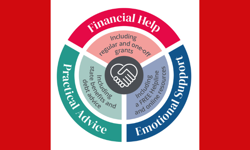Quality content is what publishers excel in creating. Printed magazines are under intense financial pressure, and editors must look for new ways to increase the mileage gained from their valuable content. RSS and XML feeds, which provide easy-to-implement technology for content aggregation, syndication, and social networking, hold promise as a turbo-charger for increasing content consumption, reach and engagement with increasingly hard-to-reach consumer audiences. Originally the province of the tech-savvy, RSS (Really Simple Syndication) and XML feeds are now mainstream. Feeds provide publishers with versatile structured formats for rapidly aggregating, distributing and managing content across multiple platforms. The technology is simple. The daunting challenge is what to aggregate and distribute and how to present it to the public. The solution is rooted in how consumers relate to content online.
It is not news that consumers have turned increasingly toward their computer screens and away from printed publications and even from television during some time slots. What are these consumers viewing on their computer screens? What is so attractive and how can a publisher grab their attention? Grabbing the consumer’s attention requires an understanding and cooptation of the internet using public’s seemingly boundless interest in and appetite for social media.
Today’s consumer has a built-in expectation of continuous seamless connectedness between their online and offline worlds, their personal and public lives. Consumers now use online information, resources, and personal connections to supplement and enrich almost every life experience. Publishers, with their ability to create high-quality / high-value content, are logical providers and purveyors of the information that consumers seek. Feeds are the publisher’s pipelines to the new style content consumer.
Although familiar to most internet users through the widespread adoption of RSS icons denoting the availability of feeds, RSS and XML feeds have become virtually invisible to the user in many applications. Users no longer need to learn the nomenclature and technical arcana of RSS. Users have also grown comfortable with uploading files and tagging and even remixing and mashing-up content. Discussions on RSS adoption rates are in this author’s opinion moot. There is also a need to shift the discussion from measuring awareness and adoption rates to analysis of what devices and feed distributing and consuming applications users predominantly favour.
Because feeds are device and platform agnostic, they are rapidly becoming a standard element of the social media mix. Initiatives such as Open Social and the Facebook platform are providing more standardised application interfaces for meaningfully connecting content with users, and users with each other. With integrated applications, users today can consume content pulled from feeds unconsciously, whether on their desktops or mobile devices. Freed from device and platform eccentricities, developers are rapidly creating feed-based applications for information sharing and social networking.
Reaching Distracted Consumers
As internet users become accustomed to receiving and managing information through feeds and feed-based applications, we can expect them to relate less frequently with the information’s original source. The website becomes a ‘mother ship’, a repository of information. Once a reader has subscribed to feed from a site, the reader is no longer compelled to visit the site to read its content. This shift in media usage will mirror what has already occurred in print publications. Because feeds from sites and sites themselves are the same medium, the shift is more subtle. New measurements beyond the traditionally calculated CPM rates are needed to monetise the new content consumption model. These models must take into consideration the countervailing forces of increased loyalty gained through customer interaction with feeds and other media presented by the publication.
Because feeds present the user with a steady diet of new information in a readily digestible form, those publishers who place the right types of information in situations that engage consumers will see opportunities to increase consumer attention, engagement and loyalty with their brand. New metrics must be computed that recognise, quantify and monetise these new levels of engagement.
Internet users are evermore distracted than in the past. The increased use of mobile devices and broadband has created a population that is online 24/7 everywhere. Whereas, there was once just text available on the web, there is now an abundance of video and audio content. In the United States, YouTube is the second most popular search engine behind Google and ahead of Yahoo! The iPod and other mp3 players are pervasive and seize attention. The consumer, with all this information and entertainment at hand, has become more selective than in the past. With so much content to select from, the consumer can freely pursue highly personalised interests and passions. This fragmentation provides opportunities for the growth of clearly defined niche publishing products that appeal to highly engaged small market segments. These provide a strong value proposition to advertisers who want to place their message before highly qualified and passionate potential customers.
Cutting through the Clutter
The huge growth of search suggests that whenever users must answer a question or solve a problem, they turn to their online resources. This provides a baseline opportunity for publishers with limited resources to cut through the clutter. Publishers can and are using RSS and feed technology to help their readers sift and filter the information. Most readers do not read a publication from cover-to-cover with the same rapt attention for every article or subject area in the publication. By creating feeds for popular features and areas of the publication, publishers can deliver to the reader exactly the slices of information that the readers want. Many readers will find it convenient to subscribe to multiple feeds from a single publication. Recently, Conde Nast has experimented with creating Twitter (www.twitter.com) feeds for all its sites. Users can follow the publication and receive 140 character messages of interest on their computers or mobile devices.
By creating interest-driven feeds and developing communities of interest on feed-based applications like Twitter and through sites such as LinkedIn, even the smallest publication can extend its reach. The feeds themselves can be monetised with advertising.
Several years ago, there was resistance to advertising in feeds; however, consumer resistance is waning. Consumers are increasingly aware that viewing advertising is the price they must pay for receiving quality content. Tolerance levels are continuously being tested by innovative advertisers.
From Passive Reader to Engaged Content Creator
Publication readers, formerly passive content consumers, are turning into fervent content creators. A study by Nokia forecasts that 25% of all web content for entertainment will be user-generated by 2012. It is estimated that there are 184 million bloggers worldwide producing content of varying quality. 77% of internet users have read a blog. Today, blogs are mainstream media and rival traditional media. Most user-generated content (UGC) is produced on platforms that provide RSS distribution automatically. Traditional publishers must compete with UGC for readership using this technology.
There is also a zone of opportunity for publishers willing to boil the ocean of UGC into selected high-quality topical feeds presented for redistribution. As a trusted source, a publisher’s aggregated feed will be perceived as more valuable than one that the individual could easily create. Editors and publishers are accustomed to making decisions on what stories and articles are on or off point for their publication. Re-aggregating feeds is an excellent relatively easy way to generate more high value content. Offering the feeds for redistribution extends the publication’s reach.
The growth of UGC has created a user population that sees content creation as an integral part of their engagement with brands and websites. These users are willing critics and avid fans. They actively participate in forums, write blog posts, leave comments on blogs, upload photos and videos and engage with the brand. They will also help market the brand if they are provided with tools that allow them to show their allegiance.
Bloggers have eagerly embraced badges, widgets and gadgets, enthusiastically adding them to their blog templates. Widgets and gadgets are easy for developers to build. A customised widget, based on an RSS feed, can be developed in less than an hour using tools such as Widgetbox (www.widgetbox.com). They are within the reach of the smallest publisher. Internet users have no resistance to branded widgets and proudly post them on their blogs and Facebook pages. They give the publication access to the reader’s personal walled garden. Each user who installs a widget on their personal social-networking space extends and exposes the publisher’s brand to multiple ‘friends’ and contacts. The user installing the branded widget in essence vouches for the publisher’s brand. Publishers need to be willing to cede control over distribution to these passionate users so that they can help extend the publisher’s reach across a fragmented marketplace.
The development of robust social applications that provide users the opportunity to thoroughly interact with the publishing product by uploading photos and videos as well as content is the next generation for publishing. Social networking, widgets, user-generated videos and photos aren’t just the domain of sites like MySpace and Facebook. Integrated applications that bring all of these elements together are within the reach of most publishers through applications such as Ning (www.ning.com) and KickApps (www.kickapps.com). With these applications, publishers can readily create communities of interest.
A successful example of this integration is Budget Travel (www.budgetravel.com), the online version of Frommer’s Budget Travel magazine. Budget Travel includes expert editorial information coupled with a social media component that includes reader tips and travel journals. Part of the magazine’s mission is to build a community of readers that come together around their passion for travel. Budget Travel features reader provided content in several sections of every issue.
In its June 2008 issue, Budget Travel comprised their entire, 10th Anniversary issue, of reader-created and submitted content. Every story and photo was submitted by readers. At the same time, myBudgetTravel was launched as a destination for travel enthusiasts to gather and share their stories, photos and videos. UGC is not just an add-on for the magazine, but it is part of the product.
Stepping into the Pool
Implementation presents challenges. Meshing technology with vision is not always easy. However, one cannot swim without stepping into the pool, and it is possible to tip a toe in vs diving head first into a complete branded application. A Twitter feed or a few RSS feeds offered to readers can readily be followed by more elaborate community-based initiatives that fully leverage both the growing Open Social interface and the power of data feeds. Feed technology provides publishers the tools to cut through the clutter and the means to leverage the power of user-generated content.
FEATURE
Increasing Content Consumption with Feeds
Feeds are now mainstream. They offer trusted sources, like publishers, great opportunities to distribute not only their own content, but also other people’s. RSS, XML and other social applications are now within easy reach, says Amanda Watlington, of even the smallest publishers.










